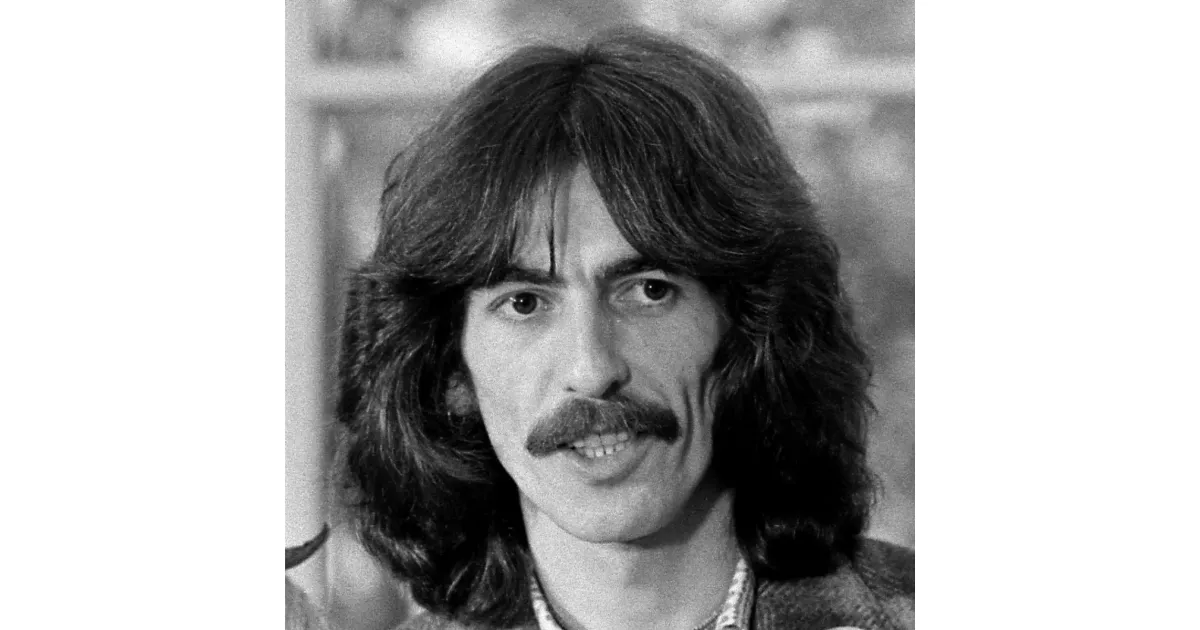How George Harrison built a successful career. Explore key moments that defined the journey.
George Harrison was a renowned English musician, singer, and songwriter, best known as the lead guitarist of the Beatles. Often referred to as "the quiet Beatle," he significantly contributed to the band's success. Harrison's musical explorations extended beyond traditional rock, as he embraced Indian culture and incorporated Indian instrumentation and Hindu-aligned spirituality into the Beatles' music, broadening the scope of popular music. His unique guitar style and spiritual influences distinguished him within the group and as a solo artist.
1956: Epiphany with "Heartbreak Hotel"
In early 1956, George Harrison had an epiphany when he heard Elvis Presley's "Heartbreak Hotel," sparking his interest in rock and roll.
March 1958: Harrison Auditions for the Quarrymen
In March 1958, George Harrison auditioned for the Quarrymen but was initially deemed too young by John Lennon, but his talent could not be denied and he later became a member.
1958: Joining the Quarrymen
In 1958, when George Harrison joined the Quarrymen, his main guitar was a Höfner President Acoustic.
1960: Tour of Scotland
During the group's first tour of Scotland in 1960, George Harrison used the pseudonym "Carl Harrison", in reference to Carl Perkins.
1960: Hamburg Residencies and Deportation
In 1960, the Beatles played at the Indra and Kaiserkeller clubs in Hamburg, but George Harrison was deported for being too young to work in nightclubs, cutting the tour short.
December 1961: Brian Epstein Becomes Beatles' Manager
In December 1961, Brian Epstein became the Beatles' manager, which polished their image and secured them a recording contract with EMI.
August 1963: Writing "Don't Bother Me"
In August 1963, George Harrison wrote his first song, "Don't Bother Me", while sick in a hotel bed in Bournemouth. He considered it an exercise to see if he could write a song.
1963: Visit to Benton, Illinois
In 1963, George Harrison visited Benton, Illinois, to see his sister, becoming the first Beatle to visit the United States.
1963: Release of 'Please Please Me' and Beatlemania
In early 1963, the Beatles released their debut album, Please Please Me, marking the arrival of Beatlemania.
1964: Development of Personal Guitar Style
By 1964, George Harrison had begun to develop a distinctive personal style as a guitarist, writing parts that featured the use of nonresolving tones, as with the ending chord arpeggios on "A Hard Day's Night".
June 1965: Appointed MBE
In June 1965, George Harrison and the other Beatles were appointed Members of the Order of the British Empire (MBE).
August 1965: Introduction to Indian Classical Music
In August 1965, George Harrison was introduced to Indian classical music and the work of Ravi Shankar, beginning his immersion in the genre.
1965: Multiple Harrison compositions on Beatles albums
From 1965 onwards, most Beatles albums contained at least two compositions by George Harrison.
1965: Harrison leads Beatles to folk rock and Indian music
In 1965, George Harrison began influencing the Beatles towards folk rock through his interest in Bob Dylan and the Byrds. He also introduced them to Indian classical music by using the sitar, starting with "Norwegian Wood (This Bird Has Flown)".
1965: Acoustic Guitar Innovation on Rubber Soul
In 1965, George Harrison used a capo to shorten the strings on an acoustic guitar, as on the Rubber Soul album, to create a bright, sweet sound.
1965: Use of Expression Pedal
In 1965, George Harrison used an expression pedal to control his guitar's volume on "I Need You", creating a syncopated flautando effect with the melody resolving its dissonance through tonal displacements.
1966: Innovative Musical Ideas on Revolver
In 1966, George Harrison contributed innovative musical ideas to Revolver, including playing backwards guitar on Lennon's composition "I'm Only Sleeping".
1966: Indian Instrumentation in Rock Music
In 1966, Harrison's introduction of the sitar on the Beatles' song "Norwegian Wood" opened the floodgates for Indian instrumentation in rock music.
1966: Pilgrimage to India
In 1966, after The Beatles' last tour, George Harrison went on a pilgrimage to India with Pattie Boyd, studied sitar with Ravi Shankar, met gurus, and visited holy places.
1966: Revolver Album
In 1966, the Beatles' album Revolver included three compositions by George Harrison: "Taxman", "Love You To", and "I Want to Tell You", demonstrating his growing influence.
1967: Inclusion on Album Cover
In 1967, George Harrison chose Eastern gurus and religious leaders for inclusion on the album cover for Sgt. Pepper's Lonely Hearts Club Band, highlighting his spiritual interests. His sole composition on the album was the Indian-inspired "Within You Without You", to which no other Beatle contributed.
1967: Release of "Within You Without You"
In 1967, George Harrison released "Within You Without You", a song that blended pop and Indian music, earning praise from John Lennon as one of Harrison's best compositions. Gerry Farrell considered it a quintessential fusion of pop and Indian music.
January 1968: Recorded 'The Inner Light' in Bombay
In January 1968, George Harrison recorded the basic track for his song "The Inner Light" in Bombay, using traditional Indian instruments. This marked the first time Harrison had a song on a Beatles single.
November 1968: Release of Wonderwall Music
In November 1968, George Harrison released "Wonderwall Music", the soundtrack to the film Wonderwall. This marked the first solo album by a Beatle and the first LP released by Apple Records, blending Indian and Western instrumentation.
1968: Collaborations with other musicians
From 1968 onwards, George Harrison started collaborating with other musicians. He brought in Eric Clapton to play lead guitar on "While My Guitar Gently Weeps" and collaborated with John Barham on his debut solo album, Wonderwall Music.
1968: Study meditation in Rishikesh
In 1968, George Harrison traveled with the other Beatles to Rishikesh in northern India to study meditation with Maharishi Mahesh Yogi.
January 1969: Harrison Quits the Beatles
In January 1969, frustrated by creative tensions and other issues within the group, George Harrison quit the Beatles during the filmed rehearsals at Twickenham Studios but returned 12 days later.
December 1969: European Tour with Delaney & Bonnie and Friends
In December 1969, George Harrison toured Europe with Delaney & Bonnie and Friends, featuring Eric Clapton and others. During this tour, Harrison began playing slide guitar and started writing "My Sweet Lord."
1969: Co-writing "Badge" with Clapton
In 1969, George Harrison co-wrote the song "Badge" with Eric Clapton, which was included on Cream's album Goodbye. Harrison played rhythm guitar on the track under the pseudonym "L'Angelo Misterioso".
1969: Recognition from Lennon and McCartney
In 1969, Paul McCartney told John Lennon that George Harrison's songs were at least as good as theirs, marking a turning point in the recognition of Harrison's songwriting abilities within the band.
1969: Recording Abbey Road
In 1969, The Beatles recorded their album Abbey Road, which included two classic contributions from George Harrison: "Here Comes the Sun" and "Something". Harrison achieved equal songwriting status with Lennon and McCartney and exerted more creative control during the album's recording.
1969: Beatles' Rooftop Concert
In 1969, the Beatles performed their rooftop concert in London, which was George Harrison's last London performance until his benefit concert in 1992.
1969: Production of Hare Krishna Mantra
In mid-1969, George Harrison produced the single "Hare Krishna Mantra", performed by members of the London Radha Krishna Temple and helped the Temple devotees become established in Britain.
January 1970: Final Recording Session with the Beatles
On January 4, 1970, George Harrison participated in his last recording session with the Beatles. He, along with McCartney and Starr, recorded overdubs for the song "Let It Be" for the soundtrack album of the same name.
May 1970: Session with Bob Dylan
In May 1970, George Harrison played guitar on several songs during a recording session for Bob Dylan's album New Morning.
May 1970: "For You Blue" Single Release
In May 1970, George Harrison's song "For You Blue" was released as a single in the US, coupled with McCartney's "The Long and Winding Road." The single became Harrison's second chart-topper when the sides were listed together at number one on the Hot 100.
1970: Bhola Cyclone and Bangladesh Liberation War
After the 1970 Bhola cyclone and the Bangladesh Liberation War, Ravi Shankar consulted George Harrison about providing aid to the people of Bangladesh.
1970: Last Beatles Single Before Anthology
In 1970, before December 1995 and the Beatles Anthology, the Beatles released their most recent prior single.
1970: Let It Be Documentary Release
In 1970, the documentary 'Let It Be', filmed during the tumultuous rehearsals of January 1969, was released, capturing the tensions and conflicts within the Beatles at the end of their career.
August 1971: The Concert for Bangladesh
On August 1, 1971, George Harrison organized the Concert for Bangladesh at Madison Square Garden in New York. The event, featuring artists like Bob Dylan and Eric Clapton, aimed to raise funds for refugees during the Bangladesh Liberation War.
1971: Contributions to Lennon and Starr albums
In 1971, George Harrison contributed to John Lennon's Imagine album, including a slide guitar solo on "Gimme Some Truth". He also co-wrote or produced three top ten hits for Ringo Starr between 1971 and 1973.
1971: Releasing Raga Through Apple Films
In 1971, George Harrison helped finance Ravi Shankar's documentary Raga and released it through Apple Films. He also produced the Concert for Bangladesh film with Allen Klein.
1971: Organizing the Concert for Bangladesh
In 1971, George Harrison organized the Concert for Bangladesh to raise aid for the people of Bangladesh. He also wrote and recorded the charity single "Bangla Desh."
1971: Concert for Bangladesh
In 1971, George Harrison organized the Concert for Bangladesh with Ravi Shankar, setting a precedent for future benefit concerts.
1971: Academy Award for Let It Be
In 1971, The Beatles received an Academy Award for the best Original Song Score for the film Let It Be.
June 1972: UNICEF Award
In June 1972, UNICEF honored George Harrison, Ravi Shankar, and Allen Klein with the "Child Is the Father of Man" award for their fundraising efforts for Bangladesh.
1972: Donation of Letchmore Heath mansion
In 1972, George Harrison donated his Letchmore Heath mansion north of London to Hare Krishna devotees, which was later converted to a temple and renamed Bhaktivedanta Manor.
1972: Collaboration with Harry Nilsson
In 1972, George Harrison worked with Harry Nilsson on the song "You're Breakin' My Heart."
1972: Release of The Concert for Bangladesh Film
In 1972, the concert film "The Concert for Bangladesh" was released, following the album release in December. The album would go on to win the Grammy Award for Album of the Year.
1973: Collaboration with Cheech & Chong
In 1973, George Harrison collaborated with Cheech & Chong on the song "Basketball Jones."
1973: Producing Little Malcolm
In 1973, George Harrison produced the feature film Little Malcolm, but the project was overshadowed by litigation related to the Beatles' business ties with Allen Klein.
1973: Release of Living in the Material World
In 1973, George Harrison released "Living in the Material World", which topped the Billboard albums chart for five weeks. The album's single, "Give Me Love (Give Me Peace on Earth)", also reached number one in the US.
November 1974: Dark Horse Tour Begins
In November 1974, George Harrison began his 45-date Dark Horse Tour in North America, becoming the first ex-Beatle to tour North America. The shows included performances by Billy Preston and Ravi Shankar, but received mixed reviews.
1974: Last Tour Before 1991
In 1974 George Harrison had his last tour before he toured again with Eric Clapton in 1991.
1975: Collaboration with Tom Scott
In 1975, George Harrison collaborated with Tom Scott on Scott's album New York Connection.
1975: Release of Extra Texture (Read All About It)
In 1975, George Harrison released "Extra Texture (Read All About It)", his final studio album for EMI and Apple Records. It peaked at number 8 on the Billboard chart and number 16 in the UK.
1976: Release of Thirty Three & 1/3
In 1976, George Harrison released "Thirty Three & 1/3", his first album on Dark Horse Records. It featured hit singles such as "This Song" and "Crackerbox Palace" and earned favorable critical reviews.
1976: Start of Dark Horse Era
In 1976, as referenced by the album title "Best of Dark Horse 1976-1989", marked the start of the period covered by George Harrison's compilation album.
1978: Forming HandMade Films
In 1978, George Harrison and Denis O'Brien formed HandMade Films to produce Monty Python's Life of Brian after EMI Films withdrew funding.
1979: Release of George Harrison Album
In 1979, George Harrison released his self-titled album, "George Harrison", following his second marriage and the birth of his son Dhani. The album and the single "Blow Away" both reached the Billboard top 20.
1979: The Life of Brian Film Production
In 1979, HandMade Films, co-founded by George Harrison, produced the comedy film "The Life of Brian".
1980: Supporting Greenpeace and CND
From 1980, George Harrison became a vocal supporter of Greenpeace and CND (Campaign for Nuclear Disarmament).
1980: Distribution of The Long Good Friday
In 1980, HandMade Films distributed its first film, The Long Good Friday.
1981: Playing guitar on Mick Fleetwood's "Walk a Thin Line"
In 1981, George Harrison played guitar on "Walk a Thin Line" from Mick Fleetwood's album The Visitor, and he wrote and produced Ringo Starr's "Wrack My Brain", a US top 40 hit.
1981: Release of "Somewhere in England"
In 1981, George Harrison released the album "Somewhere in England", which included the tribute song to John Lennon, "All Those Years Ago".
1981: Production of Time Bandits
In 1981, HandMade Films produced Time Bandits, a co-scripted project by Terry Gilliam and Michael Palin, featuring a new song by George Harrison titled "Dream Away".
1982: Release of Gone Troppo
In 1982, George Harrison released the album "Gone Troppo", which received little notice from critics or the public.
1982: Hawaiian Influence on Gone Troppo
In 1982, George Harrison's Hawaiian influence is notable in his slide guitar work on Gone Troppo.
1984: Executive Producer for A Private Function
In 1984, George Harrison served as executive producer for the film A Private Function through HandMade Films.
March 1986: Surprise Appearance at Charity Concert
In March 1986, George Harrison made a surprise appearance at the Birmingham Heart Beat Charity Concert, an event raising money for the Birmingham Children's Hospital.
1986: Executive Producer for Mona Lisa and Shanghai Surprise
In 1986, George Harrison served as executive producer for the films Mona Lisa and Shanghai Surprise through HandMade Films. He also had a role as a nightclub singer in Shanghai Surprise, for which he recorded five new songs.
November 1987: Release of Cloud Nine
In November 1987, George Harrison released the platinum album "Cloud Nine", co-produced with Jeff Lynne. The album featured "Got My Mind Set on You", which reached number one in the US.
1987: Executive Producer for Withnail and I
In 1987, George Harrison served as executive producer for the film Withnail and I through HandMade Films.
October 1988: Traveling Wilburys Vol. 1 Release
In October 1988, Traveling Wilburys Vol. 1, recorded by the Traveling Wilburys, was released. The group included George Harrison, Jeff Lynne, Roy Orbison, Bob Dylan and Tom Petty. The album was recorded under pseudonyms. It reached number 16 in the UK and number 3 in the US.
1988: Co-founded the Traveling Wilburys
In 1988, George Harrison co-founded the platinum-selling supergroup the Traveling Wilburys, expanding his musical collaborations.
1988: MTV Music Video Awards Nominations
In 1988, George Harrison's "When We Was Fab" earned two MTV Music Video Awards nominations.
1989: Collaboration and Compilation Album
In 1989, George Harrison and Ringo Starr appeared in Tom Petty's music video for "I Won't Back Down". In October of 1989, Harrison released "Best of Dark Horse 1976–1989", a compilation of his solo work, featuring three new songs.
1989: Executive Producer for How to Get Ahead in Advertising
In 1989, George Harrison served as executive producer for the film How to Get Ahead in Advertising through HandMade Films.
October 1990: Traveling Wilburys Vol. 3 Release
In October 1990, the Traveling Wilburys released their second album, titled Traveling Wilburys Vol. 3. It peaked at number 14 in the UK and number 11 in the US.
1990: Supporting the Romanian Angel Appeal
In 1990, George Harrison helped promote his wife Olivia's Romanian Angel Appeal to aid Romanian orphans. He recorded a benefit single, "Nobody's Child", with the Traveling Wilburys.
1990: Playing Slide Guitar on Dylan's Album
In 1990, George Harrison played slide guitar on the title track of Bob Dylan's Under the Red Sky album.
December 1991: Tour of Japan with Eric Clapton
In December 1991, George Harrison joined Eric Clapton for a tour of Japan, marking Harrison's first tour since 1974.
1991: Performance at a Formby Convention
In 1991, George Harrison performed at a Formby convention, and served as the honorary president of the George Formby Appreciation Society.
April 1992: Benefit Concert at the Royal Albert Hall
On April 6, 1992, George Harrison held a benefit concert for the Natural Law Party at the Royal Albert Hall. It was his first London performance since the Beatles' rooftop concert in 1969.
October 1992: Bob Dylan Tribute Concert
In October 1992, George Harrison performed at a Bob Dylan tribute concert at Madison Square Garden in New York City, alongside Dylan, Clapton, McGuinn, Petty and Neil Young.
December 1992: Billboard Century Award
In December 1992, George Harrison became the first recipient of the Billboard Century Award, recognizing his contributions to world music and the spiritual power of popular music.
1992: Ukulele Performance of 'Between the Devil and the Deep Blue Sea'
In 1992, George Harrison televised performance of the Cab Calloway standard "Between the Devil and the Deep Blue Sea" on ukulele.
1994: Beatles Anthology Project Begins
In 1994, George Harrison started a collaboration with McCartney, Starr and producer Jeff Lynne for the Beatles Anthology project.
December 1995: Release of 'Free as a Bird'
In December 1995, 'Free as a Bird' was released as the first new Beatles single since 1970, as part of the Beatles Anthology project.
March 1996: Release of 'Real Love'
In March 1996, the Beatles released 'Real Love' as a single. It was the second single for the Beatles since 1970.
1996: Recording with Carl Perkins
In 1996, George Harrison recorded "Distance Makes No Difference With Love" with Carl Perkins for Perkins' album Go Cat Go!.
May 1997: Final Television Appearance and Cancer Diagnosis
In May 1997, George Harrison made his final television appearance on a VH-1 special to promote Ravi Shankar's album, Chants of India. Shortly after, he was diagnosed with throat cancer.
1998: Guitar Overdubs on Vertical Man
In 1998, George Harrison contributed guitar overdubs to two tracks on Ringo Starr's Vertical Man album.
2001: Guest Musician Appearances
In 2001, George Harrison performed as a guest musician on Jeff Lynne and Electric Light Orchestra's comeback album Zoom and on "Love Letters" for Bill Wyman's Rhythm Kings.
2002: Posthumous Release of Brainwashed
In 2002, Brainwashed, George Harrison's final studio album, was released posthumously, completed by his son Dhani and Jeff Lynne.
2002: Hawaiian influences on "Marwa Blues"
In 2002, Lavezzoli described Harrison's slide playing on the Grammy-winning instrumental "Marwa Blues" as demonstrating Hawaiian influences.
2002: Concert for George
In 2002, on the first anniversary of George Harrison's death, the Concert for George was held at the Royal Albert Hall, organized by Eric Clapton, to benefit the Material World Charitable Foundation.
May 2003: "Any Road" Peak on UK Singles Chart
In May 2003, the single "Any Road" peaked at number 37 on the UK Singles Chart.
2004: Grammy Award for Marwa Blues
In 2004, "Marwa Blues" received the Grammy Award for Best Pop Instrumental Performance, while "Any Road" was nominated for Best Male Pop Vocal Performance.
2006: Induction into Madison Square Garden Walk of Fame
In 2006, George Harrison was posthumously inducted into the Madison Square Garden Walk of Fame for the Concert for Bangladesh.
December 2007: Donation to Cyclone Sidr victims
In December 2007, the George Harrison Humanitarian Fund for UNICEF donated $450,000 to help the victims of Cyclone Sidr in Bangladesh, supporting programs aiding children in humanitarian emergencies.
October 2009: First George Harrison Humanitarian Award
On 13 October 2009, Ravi Shankar received the first George Harrison Humanitarian Award for his efforts in saving children's lives and his involvement with the Concert for Bangladesh.
Mentioned in this timeline
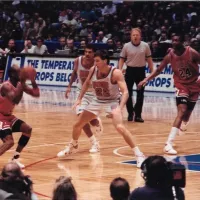
Basketball is a team sport played on a rectangular court...
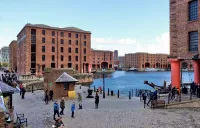
Liverpool is a port city and metropolitan borough located in...
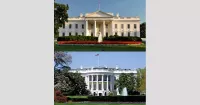
The White House located at Pennsylvania Avenue NW in Washington...
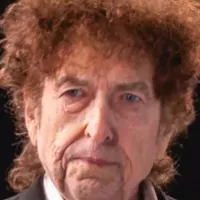
Bob Dylan is a highly influential American singer-songwriter renowned as...
California is a U S state on the Pacific Coast...

Elvis Presley the King of Rock and Roll was a...
Trending
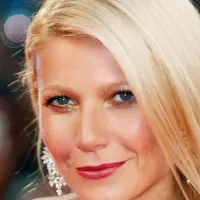
2 months ago Gwyneth Paltrow on Timothée Chalamet and Kylie Jenner's Relationship: 'Punk Rock'
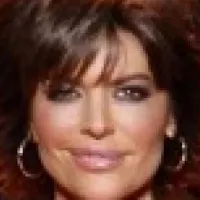
Lisa Rinna is an American actress television personality and model known for her roles on soap operas like Days of...
8 months ago Barcelona and Real Madrid to Clash in Copa del Rey Final El Clasico.
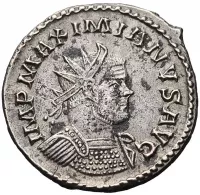
5 months ago Student Loan Repayment Troubles: 460K Denied, Backlog Alarms, Forgiveness Halted.

Amy Winehouse - was a highly acclaimed English singer and songwriter celebrated for her distinctive contralto voice and genre-bending music...
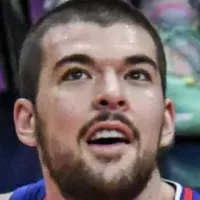
8 months ago Dyson Daniels Wins 2024-25 NBA Most Improved Player; Zubac, Cunningham Runners-Up
Popular

Candace Owens is an American conservative political commentator and author...

Ilhan Omar is an American politician currently serving as the...

XXXTentacion born Jahseh Dwayne Ricardo Onfroy was a controversial yet...
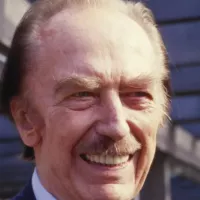
Frederick Christ Trump Sr - was an American real estate...
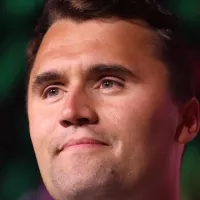
Charles James Charlie Kirk was a prominent American right-wing political...
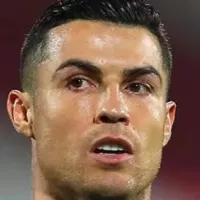
Cristiano Ronaldo often nicknamed CR is a Portuguese professional footballer...
